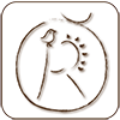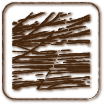
I moved from Brazil to Switzerland in 2008 when I married a Switzerland citizen. In 2007 I started bringing my things, especially work related material, and it was in here that this series which I’d like to present to you was born.
When I arrived at Lugano-Agno (airport) in August 2007, I had two bags with me. A small one and a slightly bigger one. In customs they asked me for a document and for how long I would be staying in the Confederacy. My answer was 15 days; and they replied: “Two bags for 15 days? We’ll have to take a look!”. Within the first bag, the bigger one, there were mainly winter clothes and books. The smaller one mainly had work equipment: oil based painting tubes – and they asked me where the brushes were – “In Brazil” I replied! Handmade paper, many beads, sewing and embroidering threads, but mostly three big rolls of copper strings, slightly tangled.
The customs officer asked me what did I do with that equipment. At that time my Italian was very rudimentary but I tried to explain that I drew and embroidered using those strings. He had a perplex look on his face. When he asked me how much I have paid for the copper strings – he needed to know to If he had to tax them – I meant to reply that they were very cheap and that they weren’t in a pristine condition, they were leftovers, and that I had grabbed them from a bin (in Italian the word for “trash” is “rifiuti” which also means “rejection”) and in my mind this made sense, since this equipment is rejected by professionals who attend to building material stores.
In the end they understood that I didn’t bring anything illegal, but I couldn’t get over the customs officers’ puzzled faces, so I thought I should create a series of artworks to explain in detail what do I do with these materials. And this series would be dedicated to them, the customs’ officers, as well as to those who like poetry.
And so this four part series was born:
Ombra di dubbio (Shadow of Doubt): 10 photos depicting the copper wires and their shadows. Here I would like to thank Werner and Silvia for their patience and their availability to shoot the photos based on what I had in mind.
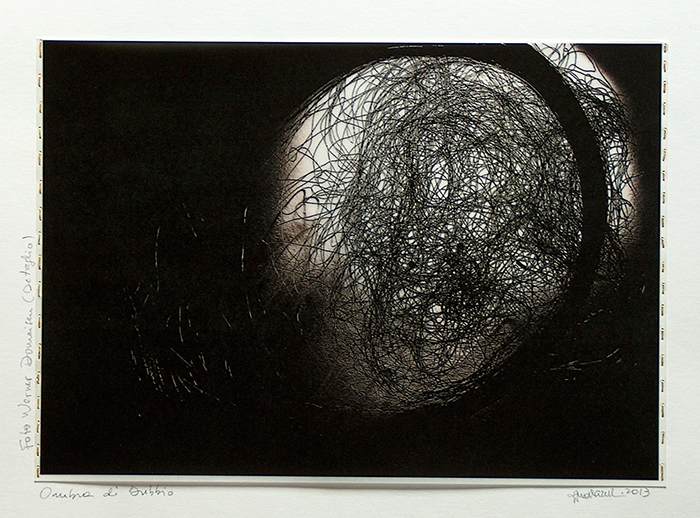
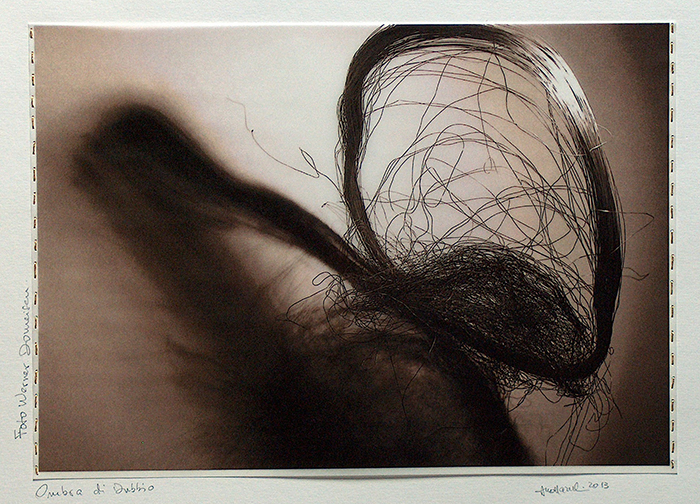
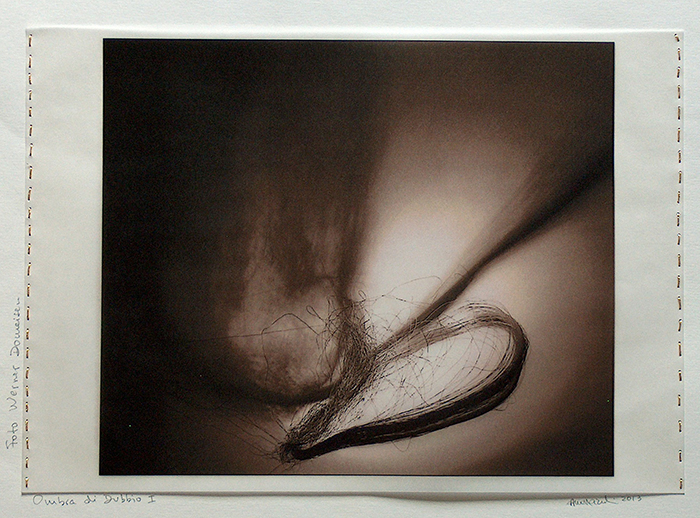
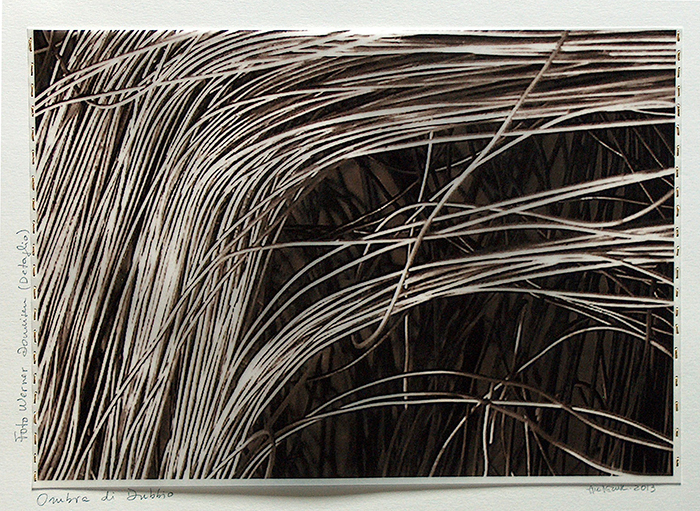
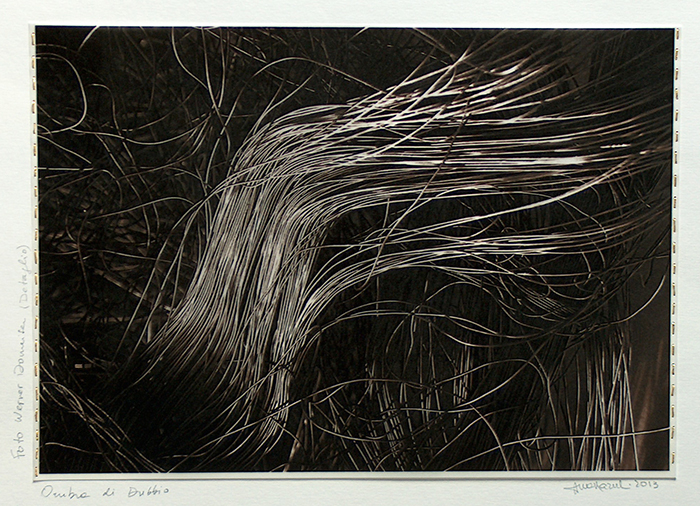
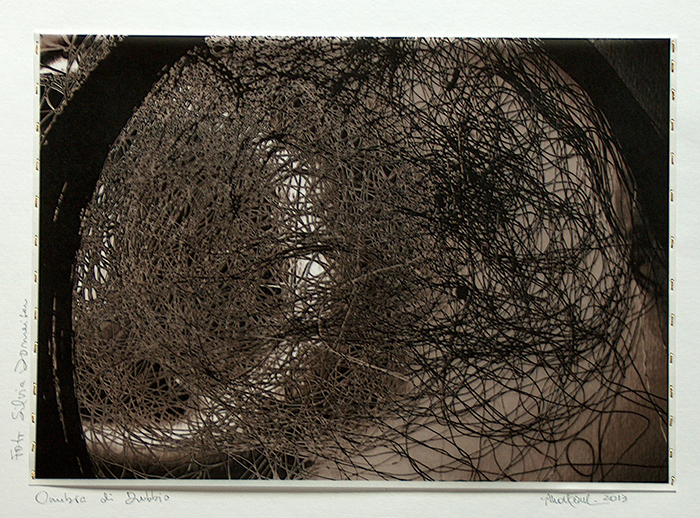
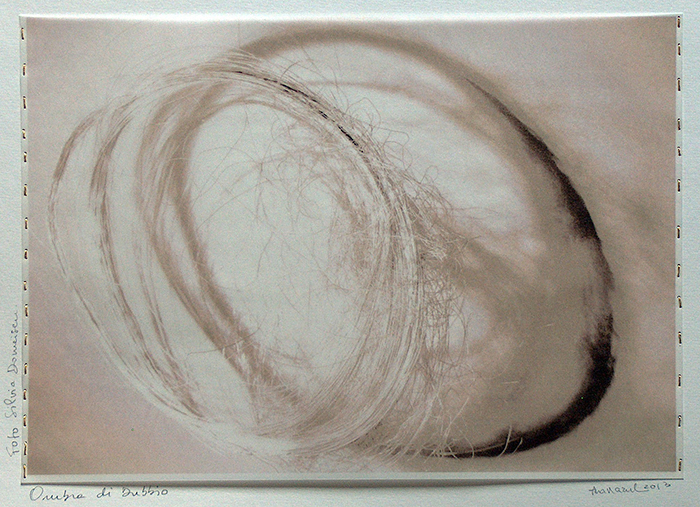
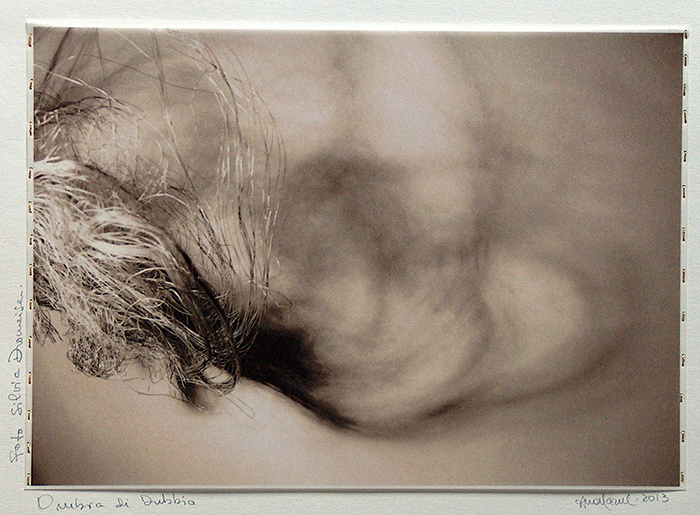
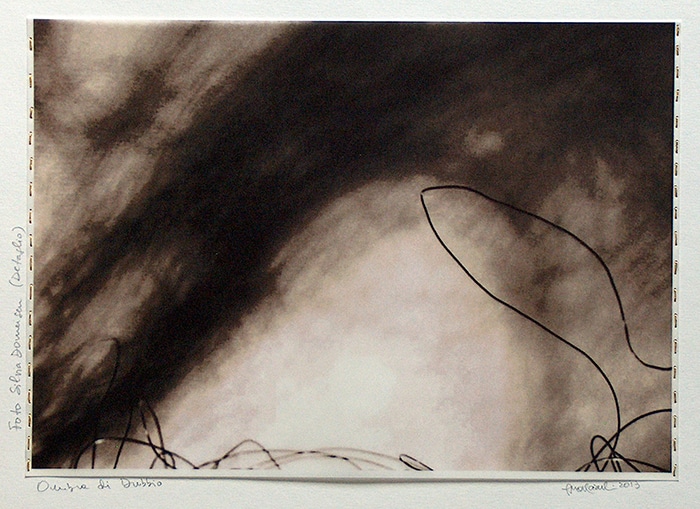
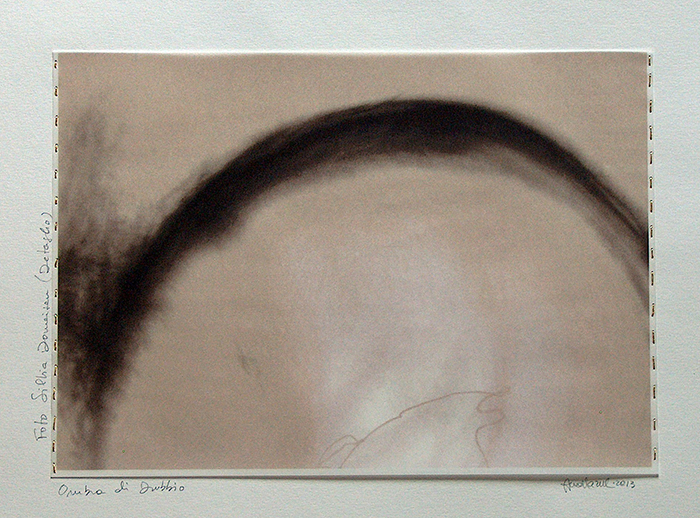
Raggi X – 11 artworks, 5 watercolor drawings and 6 collages that represent my bags as seen from the Kooten (Zurich) Airport X-ray scanner, where I was halted because of the defrosting ice which was cooling my hand luggage.
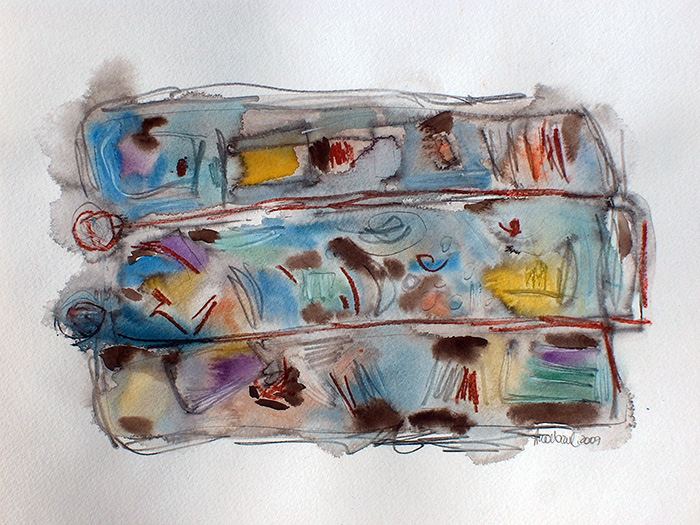
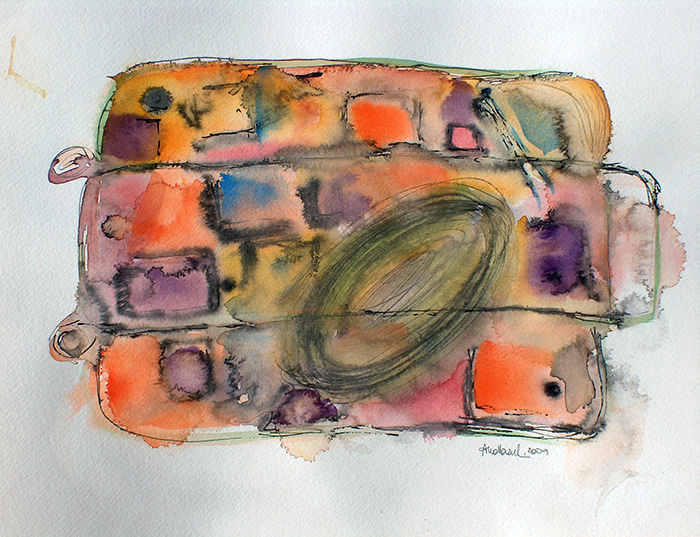
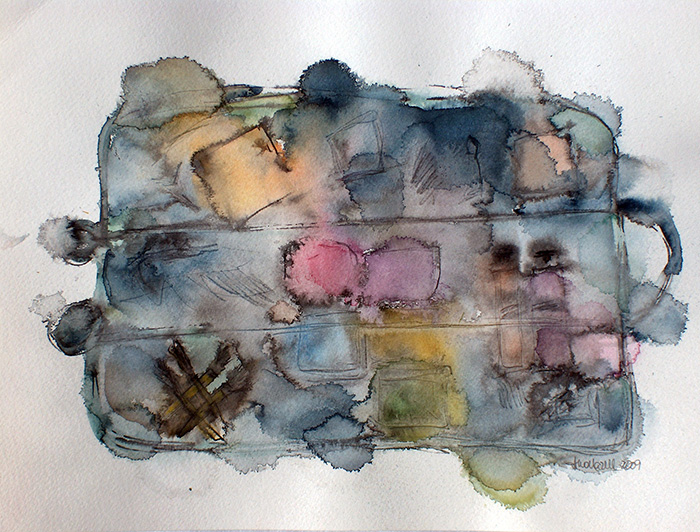
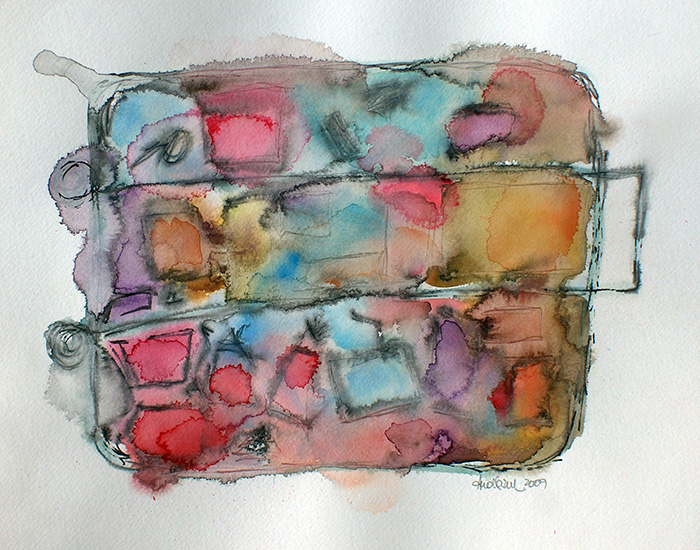
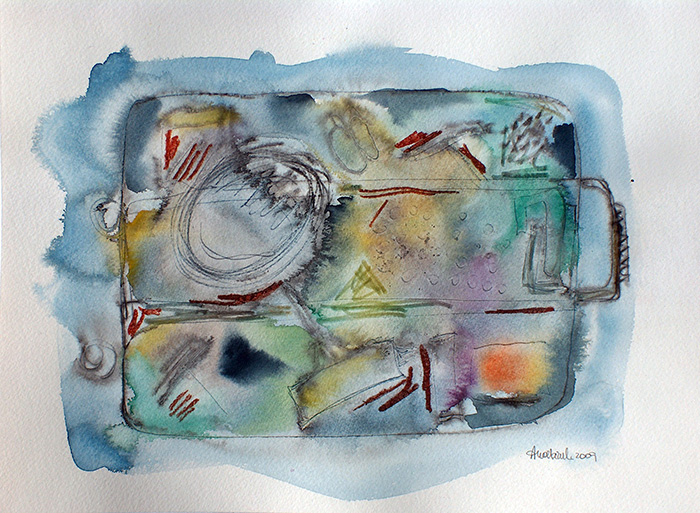
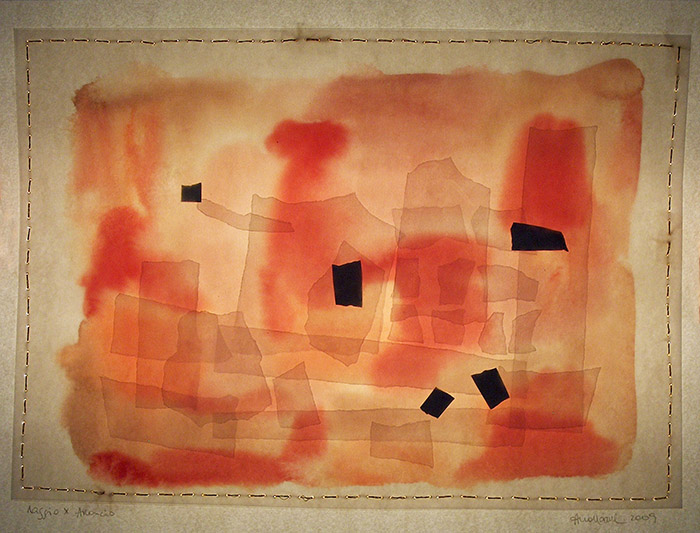
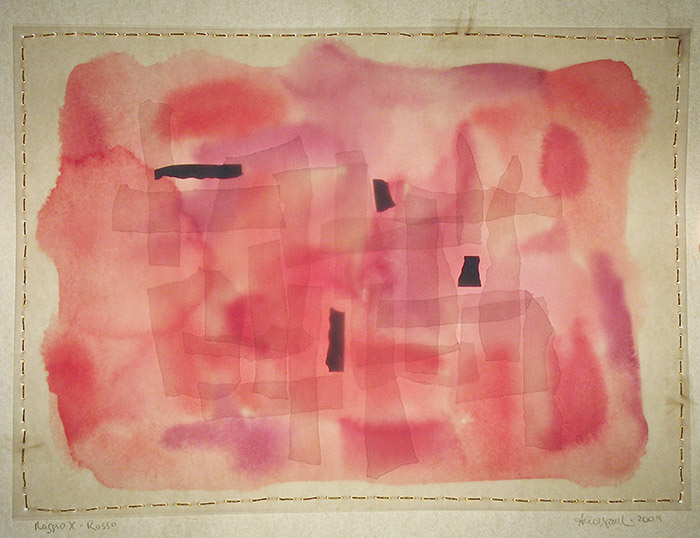
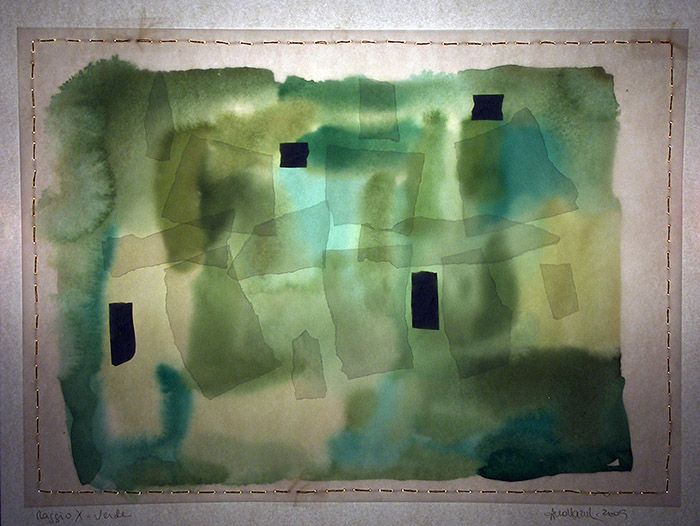
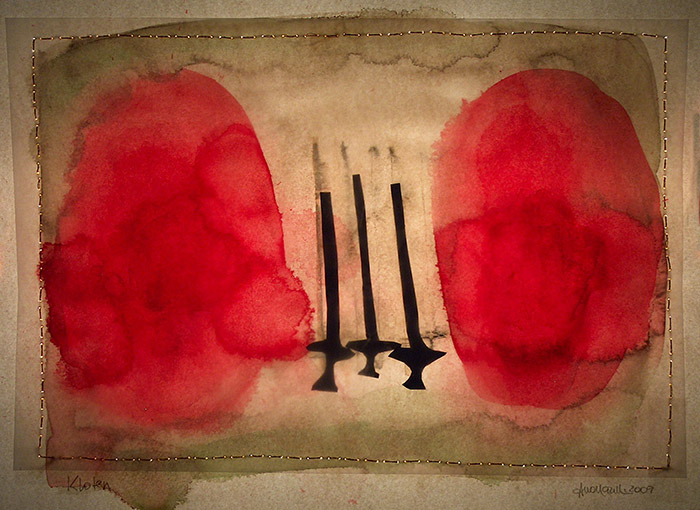
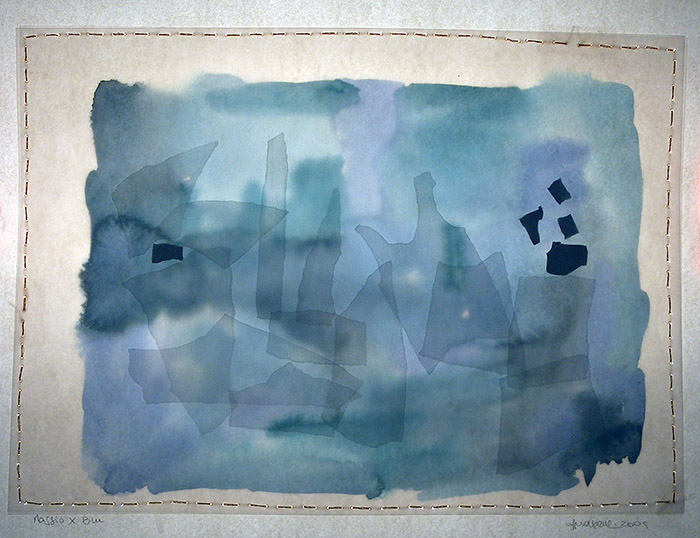
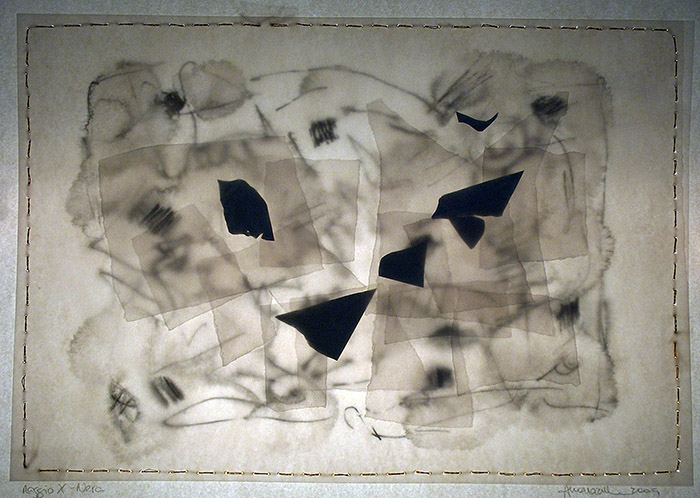
Some drawings inspirade on Raggi X series , works made by students (7 years old) who came to visit the exhibition
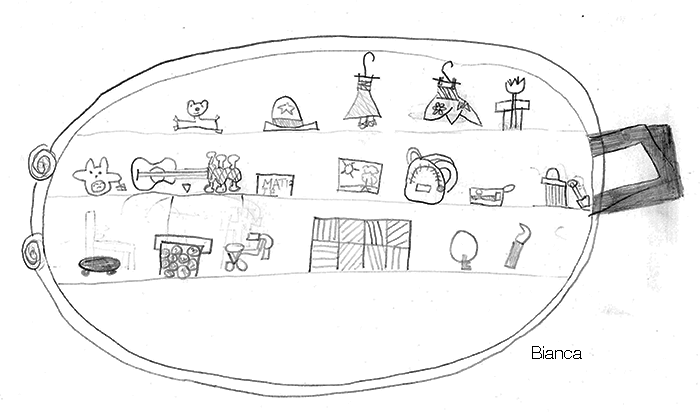
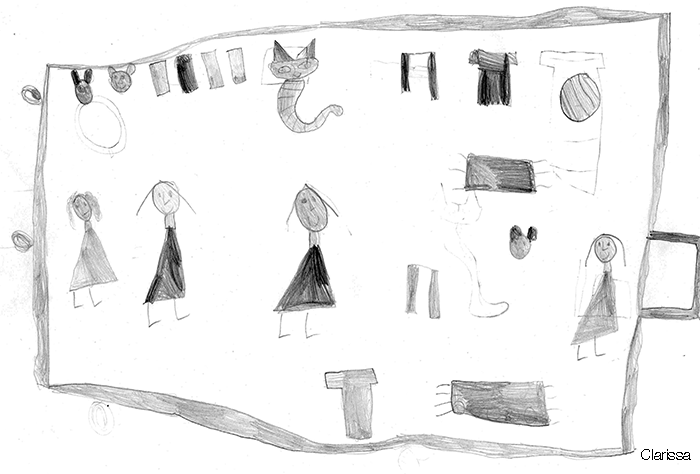
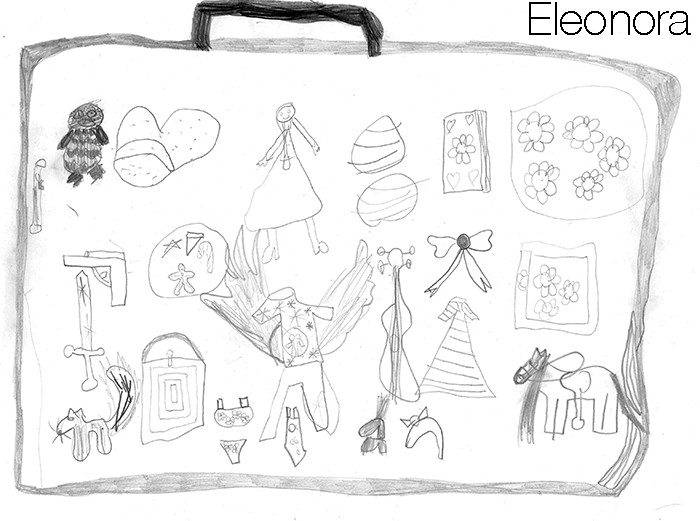
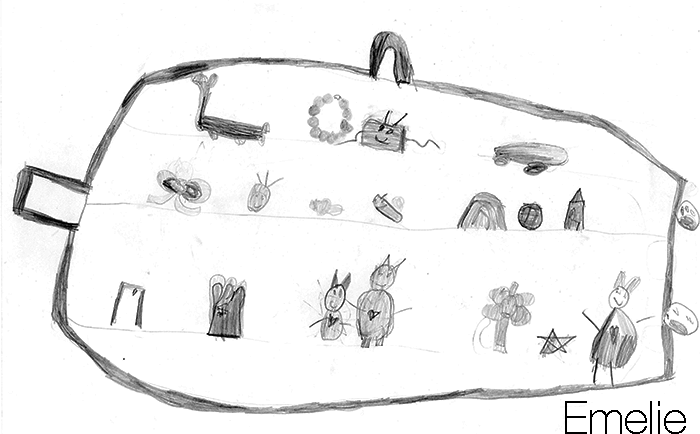
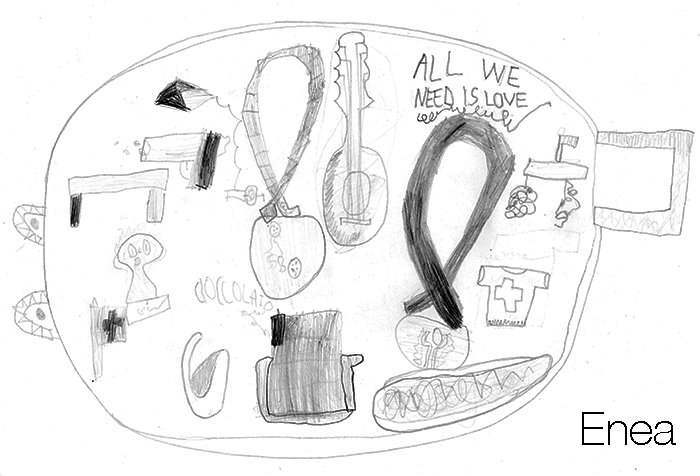
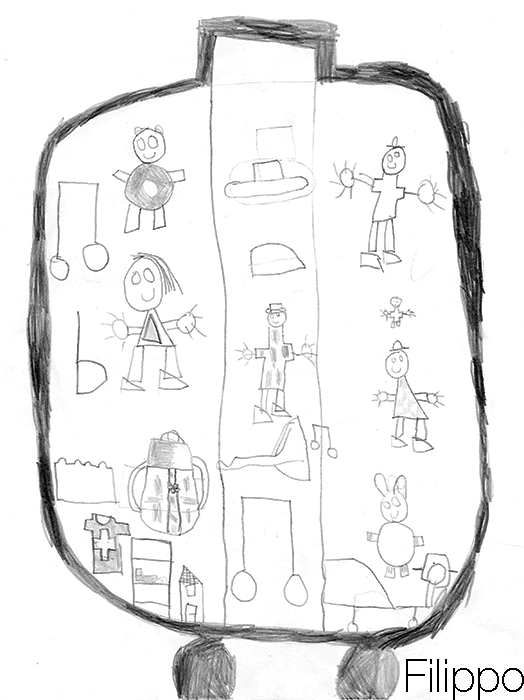
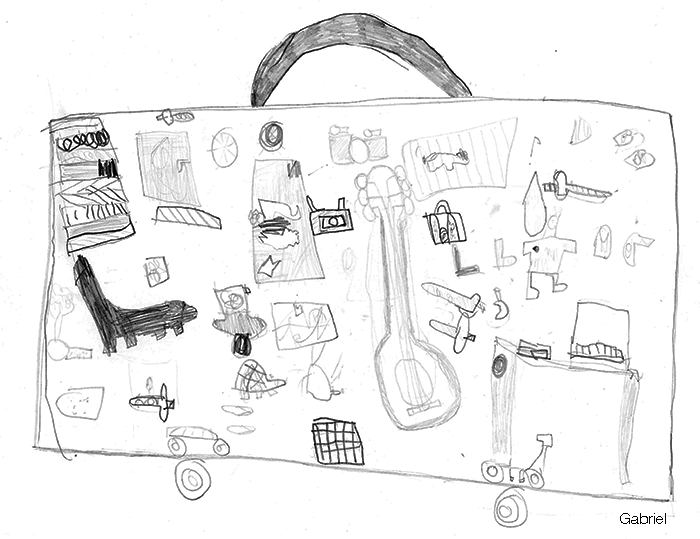
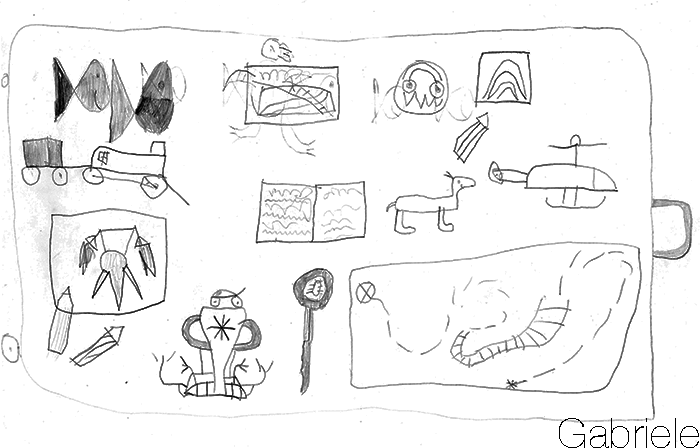
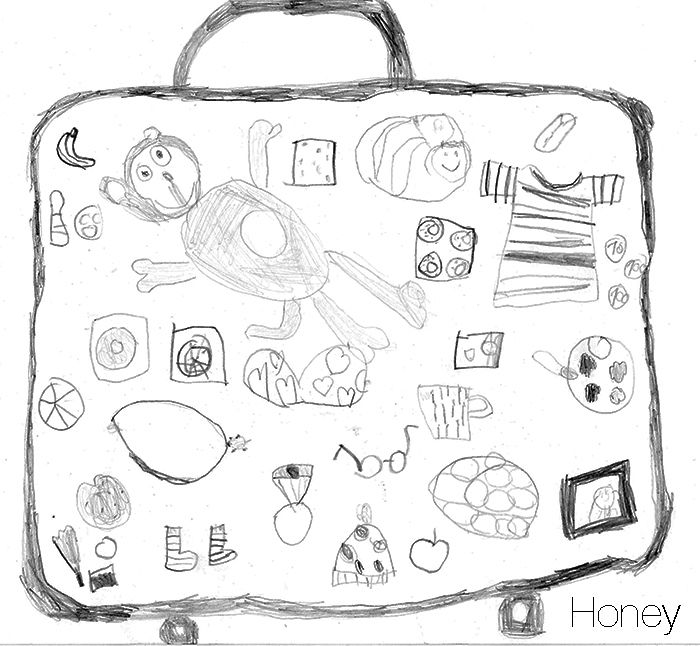
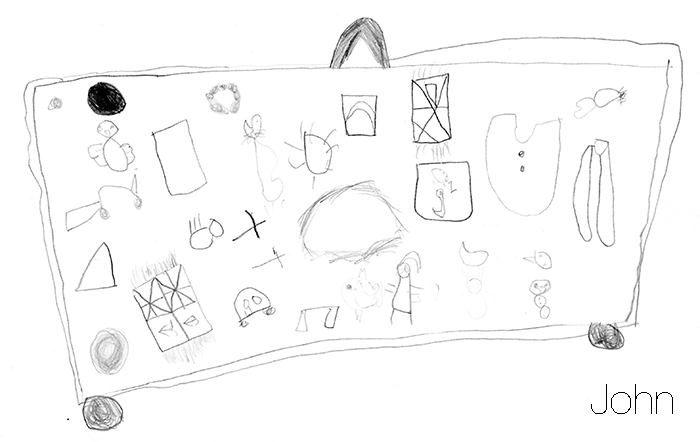
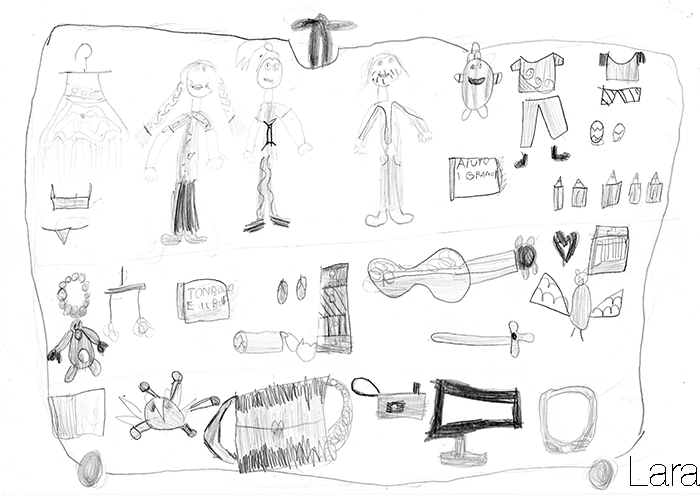
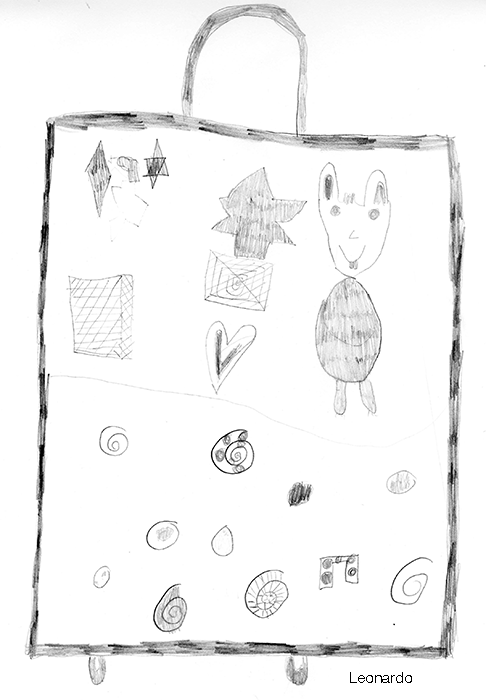
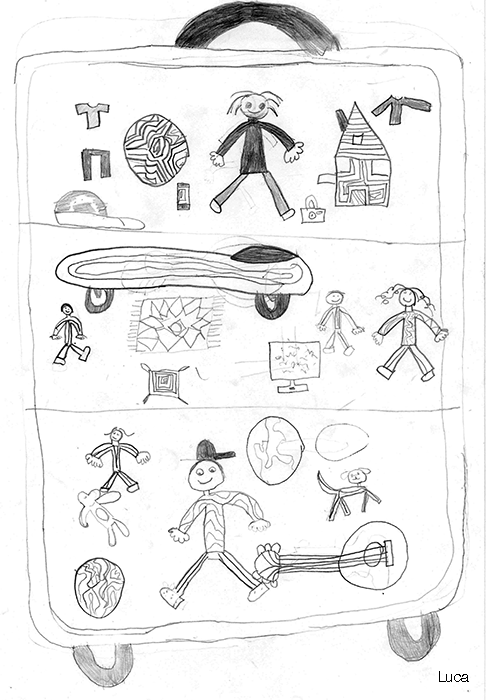
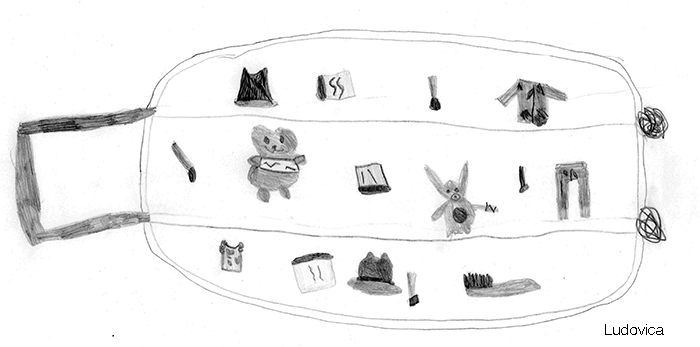
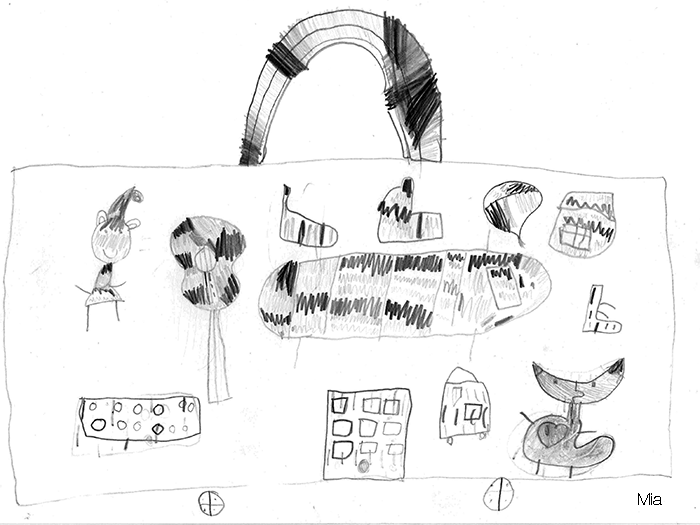
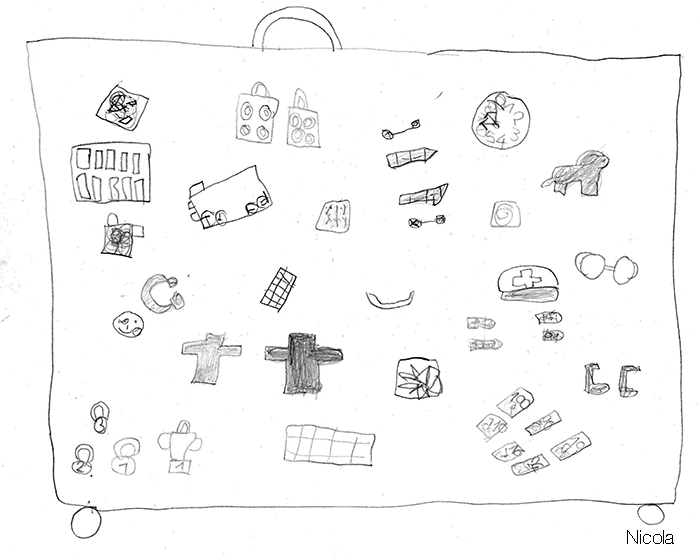
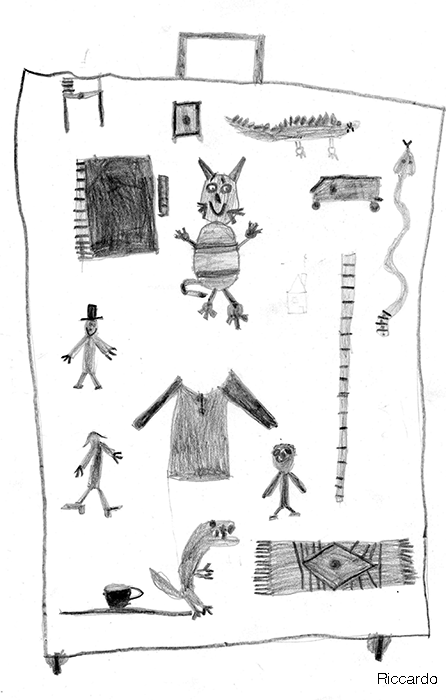
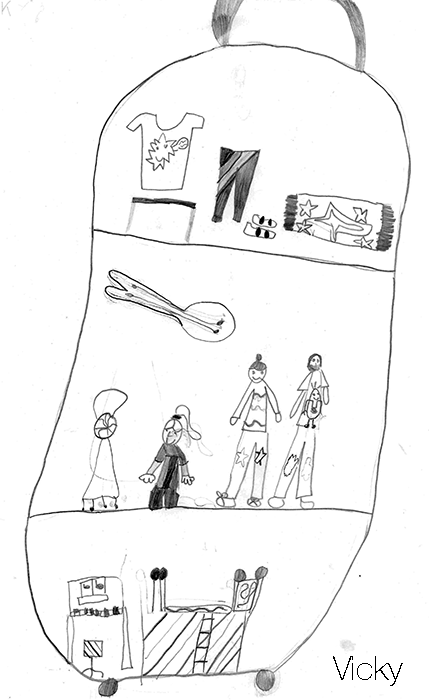
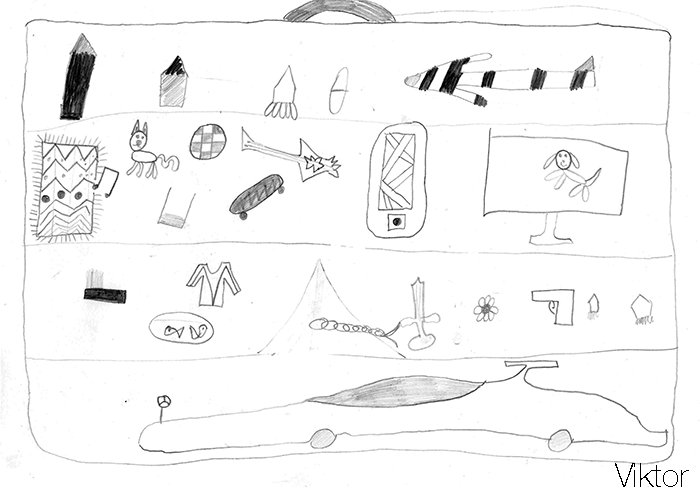
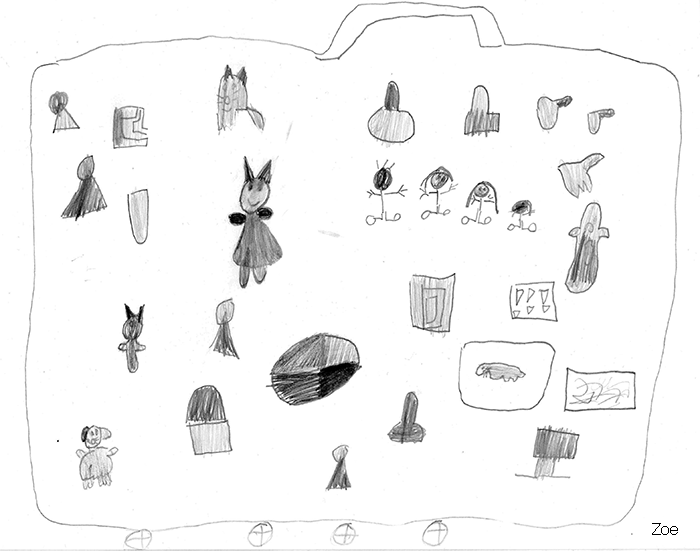
Per i doganieri (For the customs’ officers) – series of 5 embroideries on paper as well as 3 mobiles which represent my bags, made from beads, cotton string, silk and the copper strings.
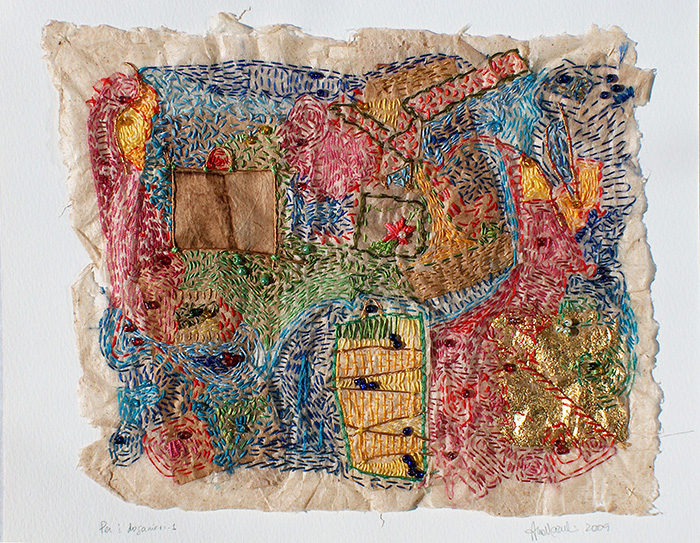
Per i doganieri 1 . 2009 . embroidery on handmade paper . 30 x 25 cm
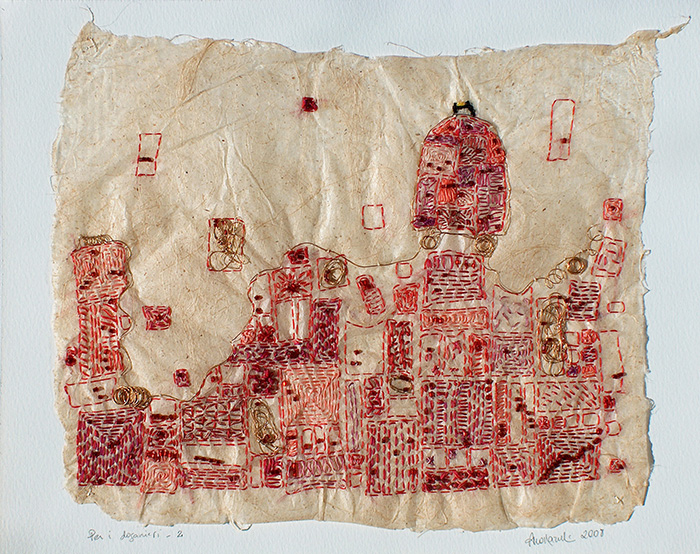
Per i doganieri 2 . 2008 . embroidery on handmade paper . 30 x 25 cm
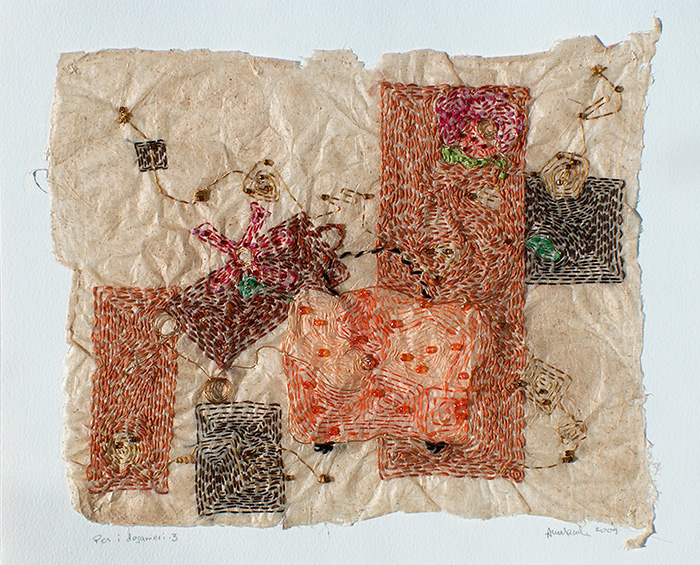
Per i doganieri 3 . 2009 . embroidery on handmade paper . 30 x 25 cm
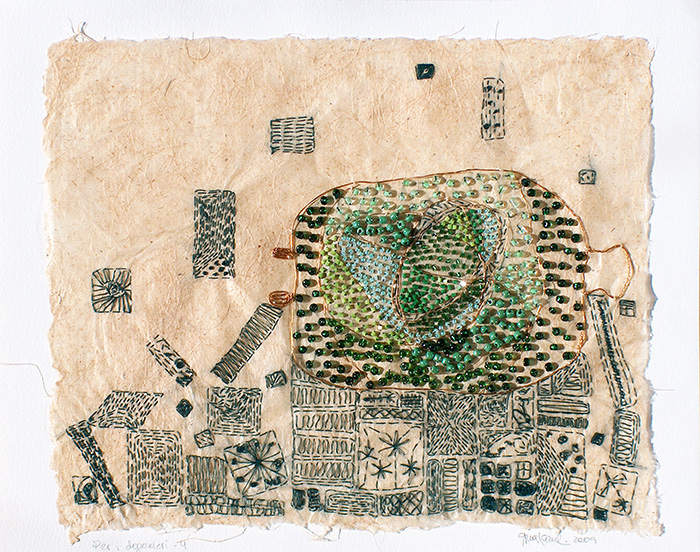
Per i doganieri 4. 2009 . embroidery on handmade paper . 30 x 25 cm
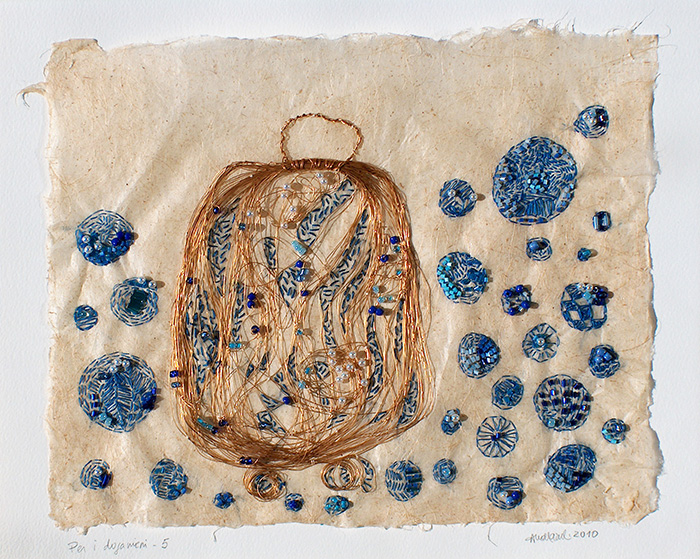
Per i doganieri 5 . 2010 . embroidery on handmade paper . 30 x 25 cm
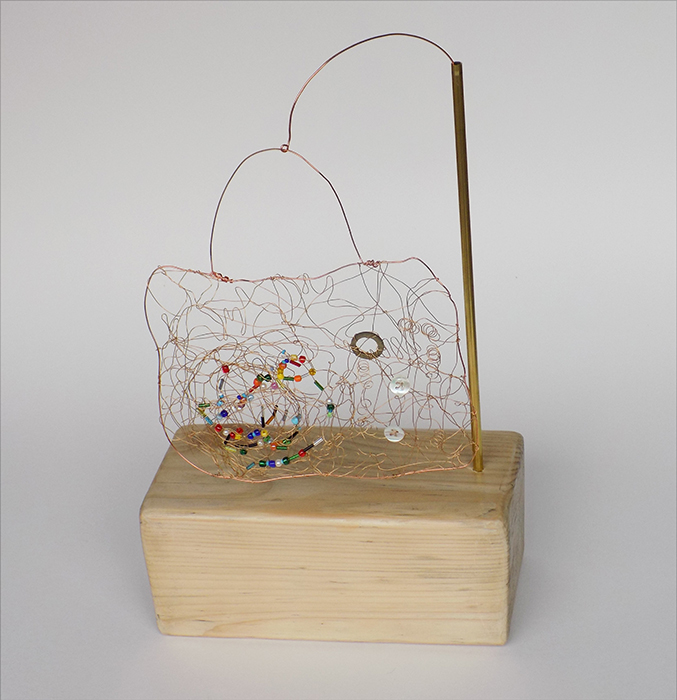
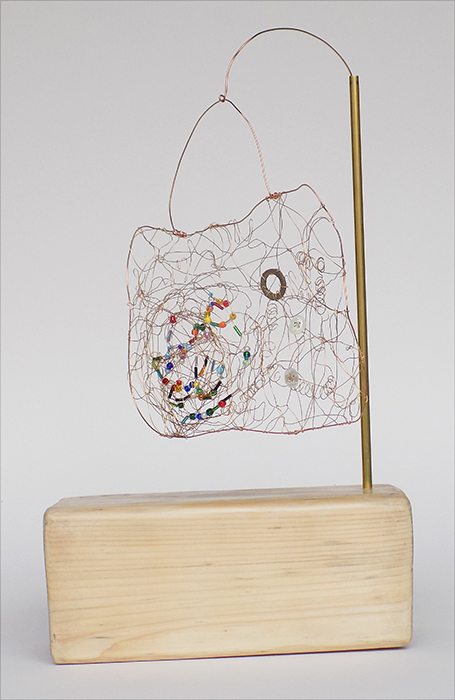
Per i doganieri 6 . 2016 . copper, beads and wood . base 21 x 10 x 9 cm
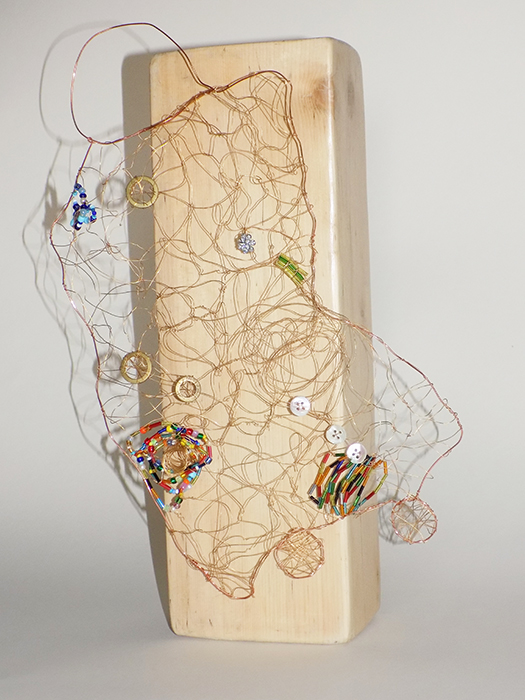
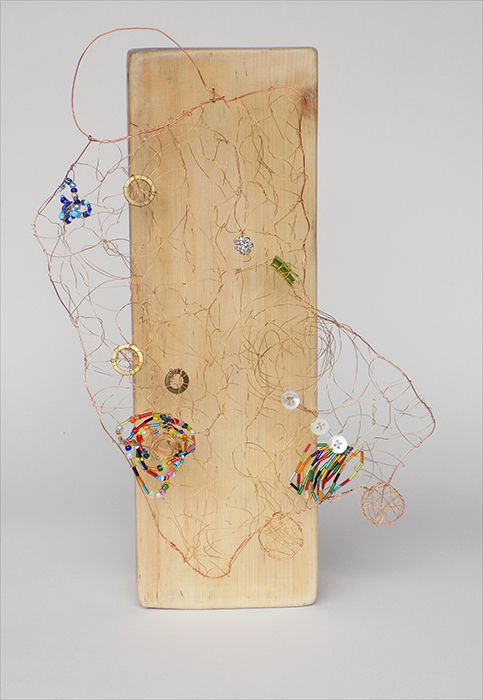
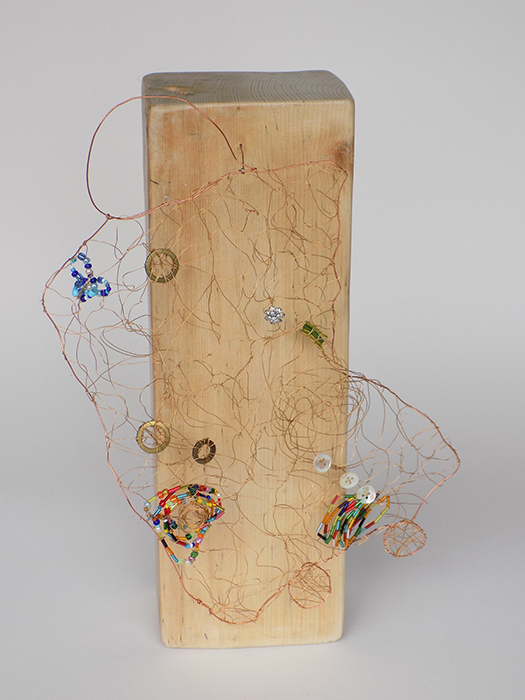
Per i doganieri 7 . 2016 . copper, beads and wood . base 34 x 11 x 7 cm
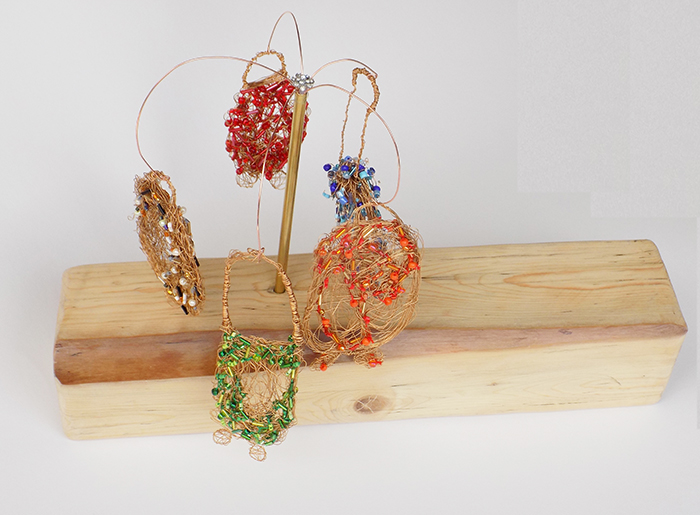
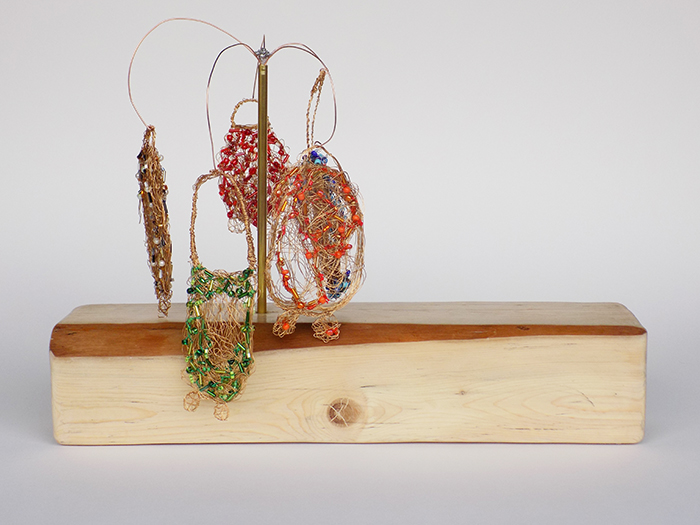
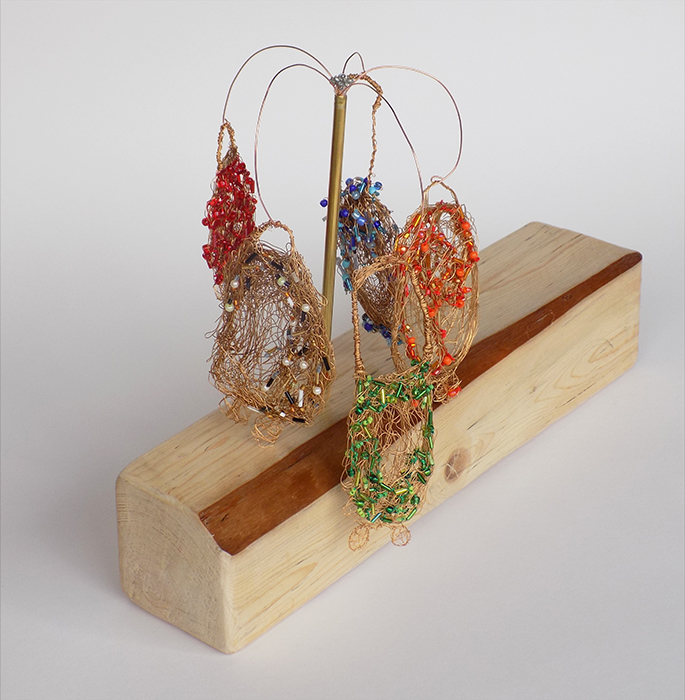
Per i doganieri 8 . 2016 . copper, beads and wood . base 36,5 x 7 x 7,5 cm . collezione dell’artista
mobiles made by the students that came visit the exhibition
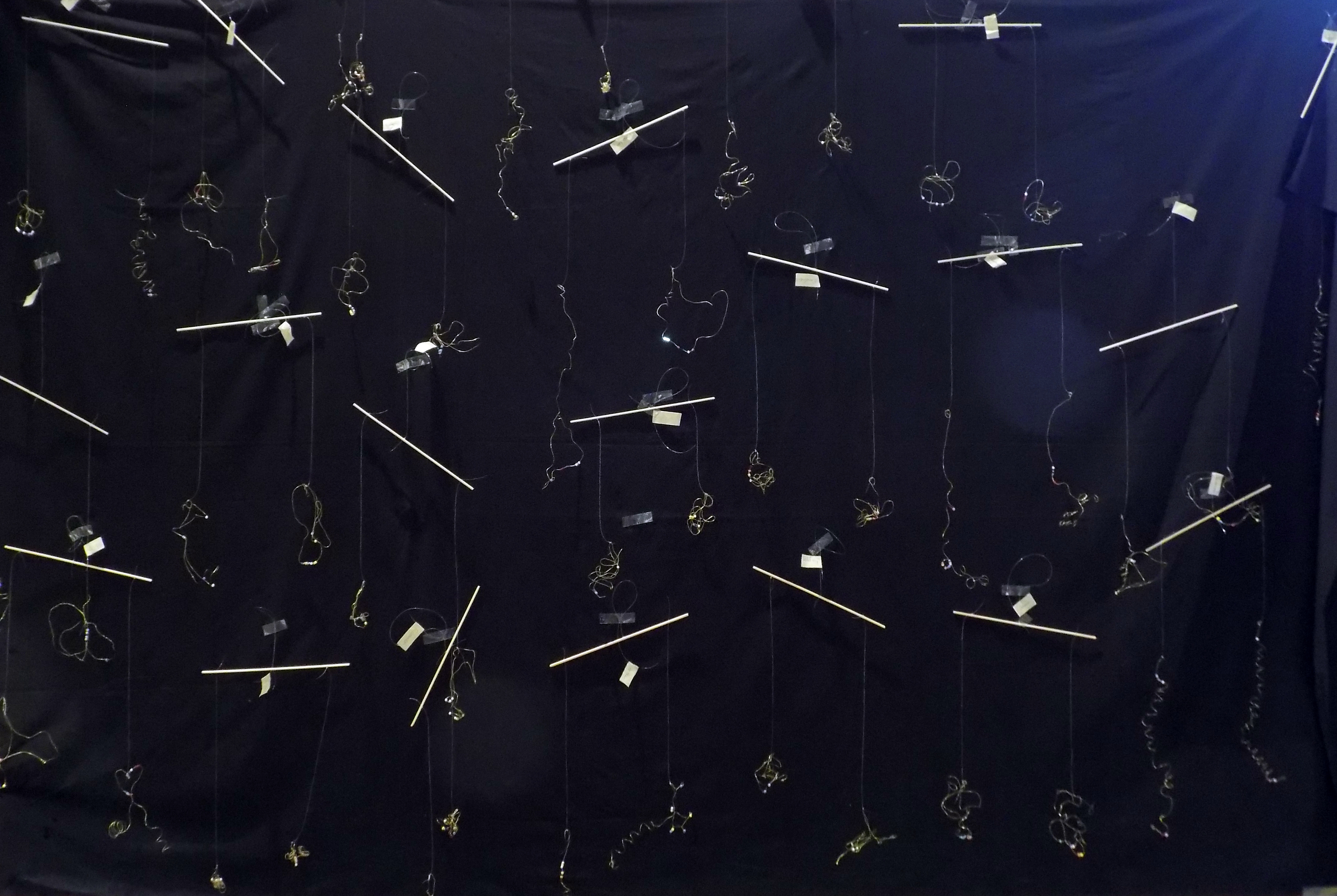
Scatola Nera (Black Box): Here I’d like to share a heart warming experience that I had when I officially moved to Switzerland in 2008. My husband and I had just arrived in Lugano-Agno Airport, carrying 5 bags. The customs’ officer had requested to check the bags. He made a thorough search and at some point he opened a small red box – where you would typically find jewelry or a ring – which actually contained a nativity scene. He kept looking at it for a while with the sweetest smile in his face.
With this situation in mind I took a similar box, where I had a “marengo” (old gold coin) stored, swapped its inner lining and sewed a phrase. This small box was put inside a much bigger, black box, representing the famous airplane black box which stores all the flights’ registry data. You can see the inside contents through a hole. Looking through a small gap makes us all equal in our curiosity, which can be more or less constructive. The way it affected those who have looked through it, reminds me of the look that the customs’ officer had in his face, which I remember so vividly.
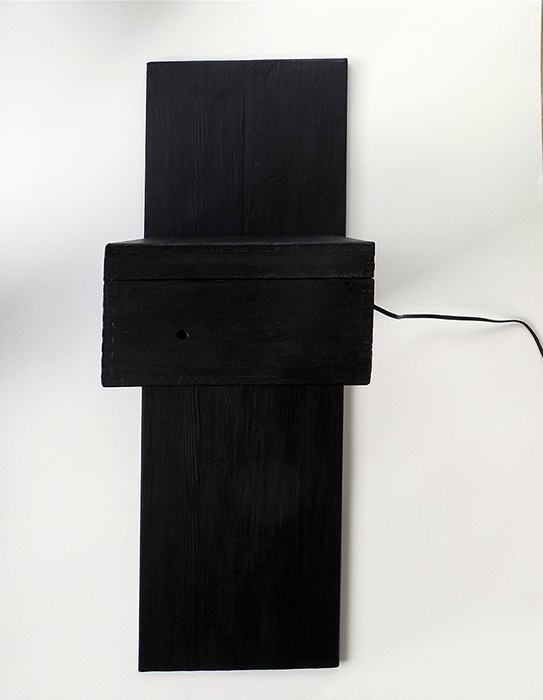
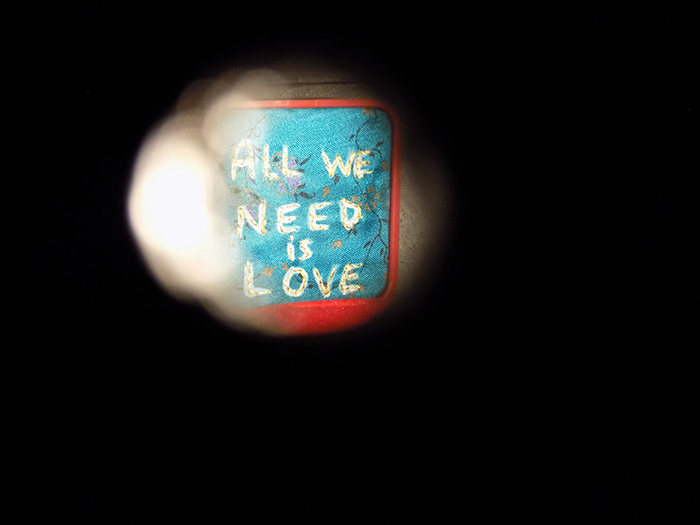
scatola nera . 2016 . wood, embroidery and light . 80 x 25 x 37 cm
english version Felipe Schilling
